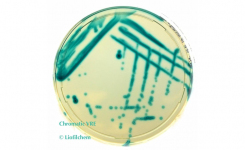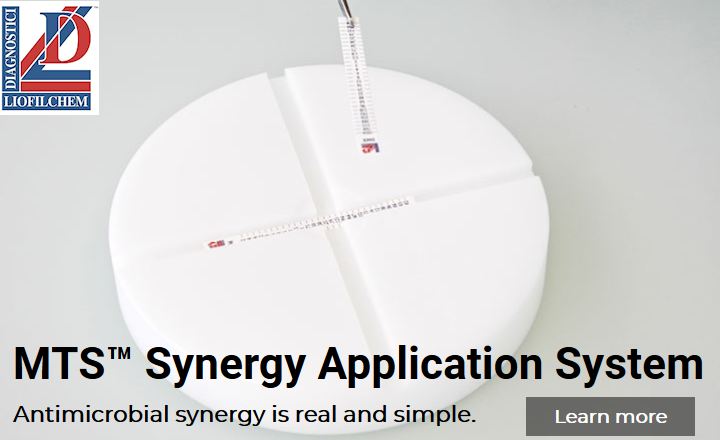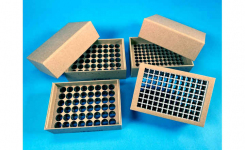
Antibiotics are among the most important discoveries of the 20th century, changing the way that the world approaches medicine, food safety, and agriculture. But most researchers are all too aware that the prevalence of bacterial strains that are resistant to one or more common antibiotics is on the rise.
In addition, new research suggests that antibiotic resistance won’t be disappearing anytime soon, since bacteria are able to survive without the cell wall that many modern drugs target1. As a result, it’s more important than ever that researchers have a way to identify bacterial strains with the potential for antibiotic resistance. That’s where genotyping using PCR can help.
Searching for Antibiotic Resistance Genes with PCR
Scientists have documented a wide diversity of pathogens that exhibit antibiotic resistance. But among those strains, there is just a handful of shared genes that confer resistance properties.
For example, the tetK gene, which confers tetracycline resistance, and the blaZ gene, which confers penicillin resistance, were found in 100% of multi-drug resistance Staphylococcus aureus strains in one study2. That result isn’t unique, either – genes for resistance to most common antibiotics have been discovered in the genomes of drug-resistant bacteria3.
That’s a major advantage for researchers since it means that you can use the presence or absence of these known antibiotic resistance genes as an indicator of whether a bacterial strain is likely to survive drug treatment. In turn, it’s possible to screen hundreds of strains for single- or multi-drug resistance in a single day using PCR. This process of searching for antibiotic resistance genes is known as genotyping.
PCR has been put to work for genotyping bacteria with respect to antibiotic resistance for several decades now. Numerous studies have developed primers that can be used for the detection of common antibiotic resistance genes, and multiplex PCR reaction procedures that can identify multi-drug resistance strains have proven highly effective.
The net result is that researchers can use PCR to quickly and accurately determine whether a strain is likely to resist a specific antibiotic. Furthermore, there are primers available to check for resistance to nearly any antibiotic of interest.
Genotyping vs. Phenotyping for Antibiotic Resistance
It’s important to note that genotyping with PCR isn’t a definitive test of whether a particular strain will be able to survive antibiotic treatment. For that, it’s necessary to do a phenotypic test – exposing the strain to antibiotics, ideally at varying concentrations, and measuring its growth.
However, genotyping is still the preferred place to start if you’re interested in finding antibiotic-resistant strains. There are a couple of reasons for this.
First, consider the case where you have 100 different isolates from different experiments, patients, animals, or environmental samples. Testing each of these isolates against dozens of antibiotics in varying concentrations is time-consuming, to say the least. In reality, setting up cultures can take months of work and burn through laboratory funds, and at the end you may find out that none of your strains exhibit antibiotic resistance.
On the other hand, if you start out by genotyping those 100 isolates with PCR, within a day you can narrow your sample list down to just those isolates that tested positive for antibiotic resistance genes. It’s still worthwhile to test that subset of isolates in culture, but you can dramatically reduce your workload and potentially only include the antibiotics that you’ve found resistance genes for in your experiment.
Second, you can use genotyping to look for antibiotic resistance marker genes in an unknown sample. This is particularly useful if you want to know whether there are likely to be any antibiotic resistance bacteria in, for example, a blood or tissue sample, food sample, or environmental sample. While phenotyping would again work for this purpose, genotyping with PCR is significantly faster and allows you to narrow the scale of your experiments to just a handful of samples and a few antibiotics of interest.
So, the main advantage of genotyping using PCR is that it saves time and money. That’s a plus for almost any lab, and in the medical environment, it can make the difference in whether or not an effective treatment plan is prescribed before an antibiotic-resistant bacterial infection is able to run rampant.
What Does Genotyping Involve?
One of the major differences between genotyping and phenotyping is that PCR relies on having DNA to examine. That means that whatever sample you’re working with, you need to get intact DNA out of it.
Thankfully, there are DNA extraction kits for a huge variety of samples. You can get extraction kits that walk you through the process of lysing cells commonly in culture, like E. coli or Staphylococcus. For more difficult bacterial strains, like spore formers, and complex samples like animal tissue, you’ll find a multitude of DNA extraction kits with more advanced cell lysis solutions.
Once you have DNA in hand, you need to conduct a PCR using primers specific for antibiotic resistance genes. A simple electrophoresis gel afterwards will reveal whether your samples produced one or more amplification products – the presence of a band in your gel is a strong indication that your sample contained an antibiotic resistance gene.
Genotyping and Beyond for Antibiotic Resistance
Genotyping is one of the best places to start for identifying the prevalence and types of antibiotic resistance you have in a sample. PCR can help you rapidly identify which samples, strains, or drugs to focus phenotypic testing on.
But the utility of PCR genotyping for antibiotic resistance doesn’t end there. This genetic information can form a basis for experiments involving DNA sequencing, expression profiling, and more. At the end of the day, genotyping should be one of many tools you can use to identify and probe the limits of antibiotic resistance in your samples.
References:
Content Supplied by Clent Life Sciences





















